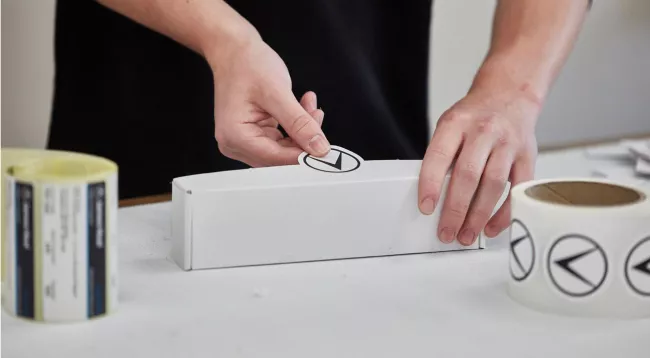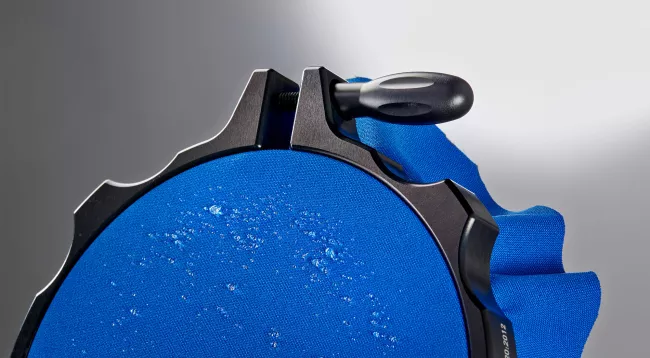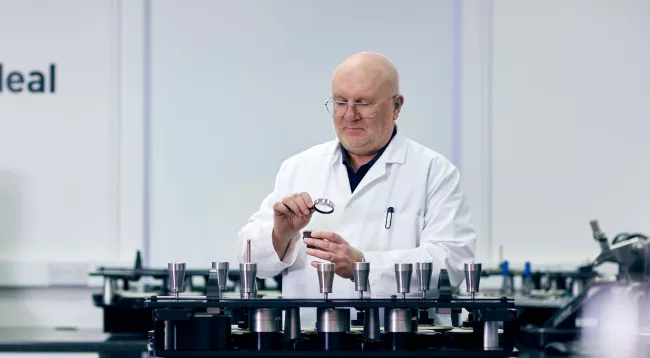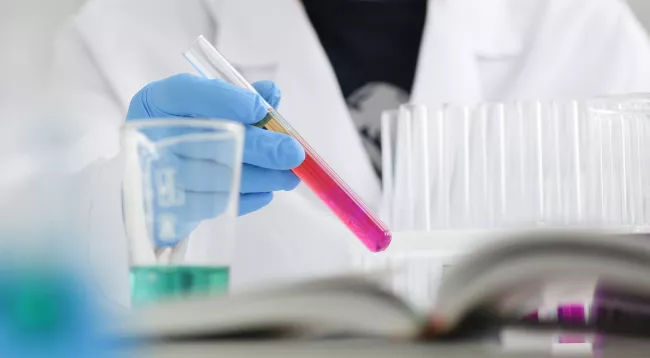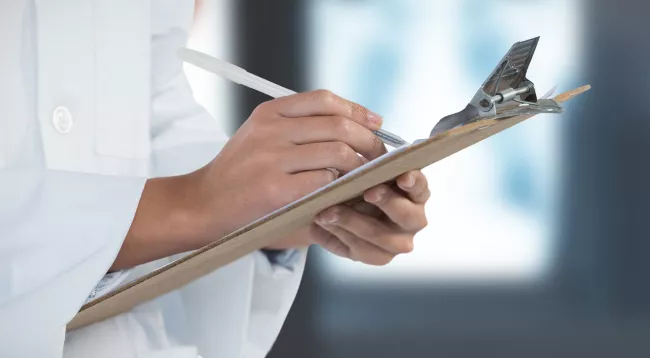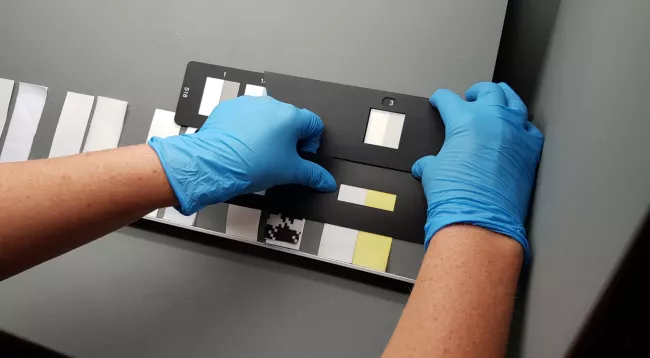Technical Specialist, Peter Goodwin, discusses how to construct a best-practice conditioned laboratory for textile testing.
Introduction
Experience shows that the understanding, planning for and design of the Conditioned Laboratory is critical to its success. Taking the time to do this at the very beginning is a vital part of a factory development.
Making a commitment to invest the money needed to build the Conditioned Laboratory correctly at the beginning of the project can save money in the longer term. If the plan is to become an Accredited Laboratory that can self-certify its products before shipping, then it will minimise external testing costs, reduce delays and make a strong, positive statement about your company's intentions to your customers.
Why is a Conditioned Laboratory necessary?
All textiles absorb specific amounts of moisture from the environment in which they are located.
For example: Cotton. When in the conditions of average humidity, Cotton will absorb 6-8% of moisture; but if the humidity rises to 100%, then the cotton will absorb around 25-27% of moisture. This is important because the strength of cotton increases depending on the amount of moisture it has absorbed.
In contrast, viscose is the opposite of cotton and it may be up to 30% weaker when it is wet than when it is dry. Therefore, if all parties test in the same controlled environment then the product will absorb the same amount of moisture in each laboratory and the results will be more accurate as a consequence.
Physical Tests like tensile strength, pilling, and abrasion must be done in an Environmentally Controlled Laboratory to overcome the effects created by varying moisture contents.
Doing this ensures that:
- The results correlate with those from other Laboratories that are testing the same fabric or garment.
- When testing the same product on a regular basis, maybe 2 or 3 times a week, the results of each test will be accurate so that a clear picture of how the product performs is obtained.
Test Methods specify what the temperature and relative humidity must be in Environmentally Controlled Laboratories.
Constructing your laboratory
To work within the required limits means that air conditioning systems must be specially designed for the room in which they have to operate. The following must be taken into account;
- Location of the room
- Surrounding ambient conditions
- Volume and size of room
- Average number of people who will work in it and their entries and exits
- Contents of the room and their potential to alter the temperature i.e. heat generated by computers, lights, motors etc
- Position of work benches and furnishings
At the end of the exercise a detailed specification will have been arrived at for the conditioning unit itself together with any ducting and circulation fans necessary to ensure that all parts of the room are the same.
The above is not the complete story because the construction of the room will play a major part in the ability of the air conditioning system to deliver the required results. Whilst it is important that the room is large enough to service immediate and future needs it is worthwhile noting that the atmosphere can be more easily controlled in a smaller room than in a larger one.
What to consider when building the Conditioned Room:
1. Location
If possible it should be located on the ground floor. If it must be upstairs then the room below should have its ceiling thermally insulated so that changes in its temperature are not transmitted through the floor.
2. Insulation
To provide insulation from the surrounding conditions all of the walls should be double walls with an air gap between them. Thermal insulation may be placed in the air-gap and the inner wall should be made from thermal insulation blocks. Correct use of the latest insulation technology allows single thickness brick walls to have insulted panels fixed to the inside of them and this can achieve the desired results if the specification of the insulation materials is correct. The ceiling must be thermally insulated.
3. Windows
Ideally there should be no windows, but this can make the working conditions quite unpleasant for the technicians involved. Therefore some windows are desirable and it is possible to include them if correct precautions are taken. There should be the minimum number possible and they should all be double insulated with the maximum possible air gap between the glass insulation panels. In extreme climates, it may be necessary to have 3 glass panels with 2 air gaps between them.
4. Entry/Exit
There must only be one entry/exit, and this must have double doors with at least a 1.5 metre gap between them. The construction of this 'air-lock' should be as 1), 2) and 3) above. The doors should have double glazed glass panels in them in the interests of safety. They must seal efficiently within their frames, and have automatic self-closing devices on them.
5. Water
Normally water is not required or desirable in the Conditioned Laboratory because it interferes with the equilibrium of the air conditioning system, however many laboratories prefer to install a small hand-washing basin.
6. Floor
The floor should be ceramic tiled or painted with a compound to reduce dust and make cleaning easier.
7. Walls
Walls can be painted or panelled in any material/colour but preferably this should reflect the company's corporate image.
8. Electrical & Air Suppliers
The electrical and air supplies should be carried in trunking around the walls with double electrical sockets spaced two metres apart. Many instruments are computerised or contain electronic components which means that an uninterrupted electrical supply with a consistent voltage is essential. UPS units or Constant Voltage Transformers are recommended to minimise the possibility of breakdowns due to inconsistencies in the electrical supply.
9. Lighting
Lighting should be with normal fluorescent tubes and should be of a level that allows the technicians to carry out detailed work, such as counting ends and picks comfortably and reliably.
10. Workbenches
Workbenches should be of convenient working height so people can work standing up. The worktops should be 75-80cms in depth. The worktops should be covered in easily cleaned laminate similar material. A selection of cupboards and drawers should be available under the worktops. The colour schemes should again reflect the company's corporate logos/image. Conditioning Shelves of non-rusting mesh measuring 60 x 60 cms should be built under some of the worktops. These should be manufactured so that the can be pulled out easily to allow the technicians to place test specimens on them in a crease-free state.
A workbench with cupboards and Conditioning Shelves below it is almost essential to allow the technicians to sit down whilst preparing test specimens. It is desirable to make this bench as large as possible so that a 2 metre length off fabric can be unrolled, full width, on it. This will allow the technicians to inspect it and also to select the best and correct location from which to take cut the test specimens.
11. Air-conditioning system
This will have to be connected by insulated copper pipes to a condenser that is located outside the Conditioned environment. In many cases this will be located outside the building. The supplier of the air-conditioning system will confirm the maximum length of pipe that is allowed between the two units and the location of the Conditioned Laboratory must take this into account.
12. Outside Condenser
This should be sheltered from direct sunlight and should be located in a place where it is easily accessed so that maintenance can be carried out easily. Generally it is not good to locate the condenser on the roof and situating the laboratory several floors above ground level in a high rise building may also cause problems with the operation and servicing of the condenser. In addition in it is wise to ensure that local authorities will allow the condenser to be located on the external wall of the building and/or that it does not impede activities in the area outside the building. Most suitable air conditioning systems will require a supply of water, the quality of which will be specified by the supplier. It will also need a small diameter drain pipe to carry waste water away from the unit.
Appropriate working practices
Working practices that help to maintain the integrity of the environmental conditions must be instigated from the first day of opening the laboratory facility. This means that any activity that can change the environmental conditions should be minimised.
When the system is operating 'in equilibrium' the instruments and technicians working in it should not have any adverse affect on the environment. It can be understood from this that it is vital to plan how the Conditioned Laboratory will be used from the very beginning and how the technicians must be trained in the correct ways of working from day one.
Opening doors
Every time the doors are opened the conditions are disturbed so the Conditioned Laboratory should not have instruments in it which do not have to be in that environment - a good example is a spectrophotometer; this is something that is used very frequently and this will automatically mean that technicians are coming in and out of the room many times in order to use it. The spectrophotometer should be located elsewhere to avoid the problems this causes.
The double doors should have automatic closers fitted to them so that the technicians do not have to remember to close them themselves. There is one basic rule for the use of these double door arrangements and this is that never should both doors be open at the same time.
Cleanliness
Cleanliness is important in any workplace. If it is necessary to wash floors and work-surfaces this should always be done at a time when testing is not in progress so that the environment is not disturbed by the water that is used and the length of time it takes to dry afterwards.
Early planning is vital to ensure that the project proceeds correctly - the cost involved in having to make serious changes to the construction or the air-conditioning system if something goes wrong and the environment cannot be controlled can be enormous and carrying out the work can be very disruptive.
Conclusion
The information given are based on principles that are proven worldwide to have provided the conditions that are acceptable to editors and Auditors and, most critically, to provide facilities where there is the best possibility to generate accurate and reproducible test results. Experience shows that the understanding, planning for and design of the Conditioned Laboratory is critical to its success. Taking the time to do this at the very beginning is a vital part of a factory development.
Making a commitment to invest the money needed to build the Conditioned Laboratory correctly at the beginning of the project can save money in the longer term. If the plan is to become an Accredited laboratory that can self certify it's products before shipping, then it will minimise external testing costs, reduce delays and make a strong, positive statement about your company's intentions to your customers.
Early planning is vital to ensure that the project proceeds correctly - the cost involved in having to make serious changes to the construction or the air-conditioning system if something goes wrong and the environment cannot be controlled can be enormous and carrying out the work can be very disruptive. If projected for a future purchase, then this must be taken into account when the Conditioned Laboratory is designed and the air-conditioning system is bought. Machines such as this generate heat and hot exhaust air has to be piped away from them.
If the system is designed correctly it will handle this without a problem; if allowance is not made for this then it may be impossible to maintain the correct environment in the laboratory when the light fastness tester is operating. Thinking forward about this kind of issue is a very important part of the planning that goes into the building of all of the Laboratory but it is most critical in the Conditioned Laboratory because the of the precise control that is required in order to get the necessary results.

